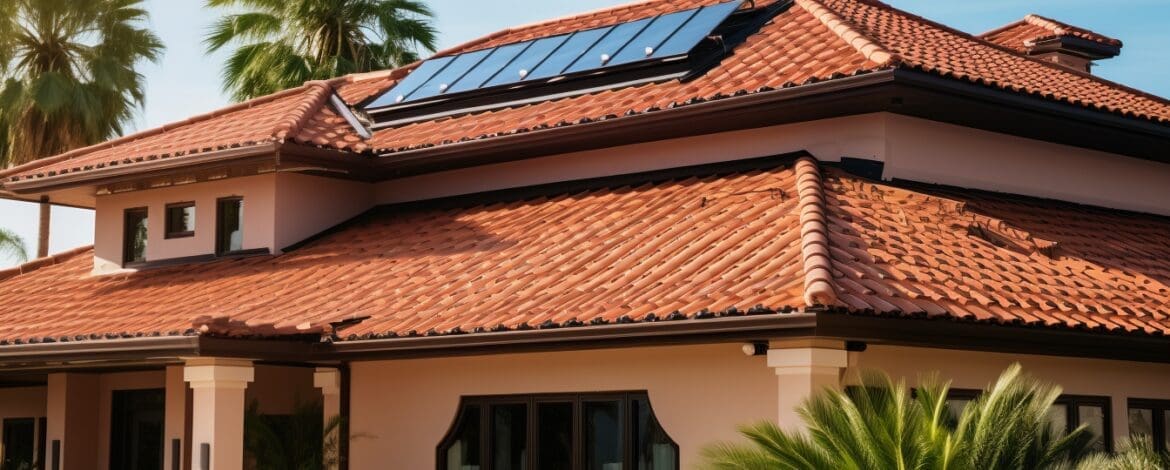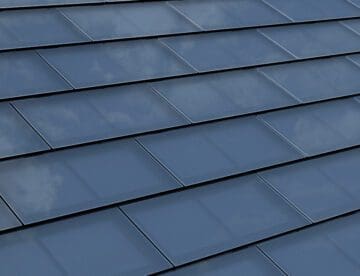Did you know that understanding the economics of roofing can help you invest in cost-saving strategies to slash energy costs, roof repairs, and property maintenance?
After reading this article, you’ll better understand how roofing economics impacts your pocket.
The Financial Impact of Roofing on Property Owners
The financial impact of roofing is a stormy affair. Battling hurricanes and relentless sunshine, Florida homeowners face escalating costs to fortify their roofs. Soaring home insurance premiums have become a state battleground. And each bill reminds Floridians about the price of protecting property against nature’s fury in the Sunshine State.
There are six factors affecting the economics of roofing in Florida. These are:
- The source of raw materials
- Labor and manufacturing costs
- Market supply and demand in the roofing industry
- Technology and innovation
- Insurance costs
- Energy efficiency
Raw Material Sourcing: What Property Owners Need to Know
The cost of raw materials significantly impacts roof replacement costs and repairs. For example, since 2000, the cost of asphalt shingles has almost tripled. Also, the prices of other roofing materials, like metal, timber, and facings, have soared to unprecedented levels.
Current trends in roofing material costs make it difficult for homeowners in Florida to plan for future roofing projects. Inflation significantly impacts the price of metal, asphalt, and wood. Also, uncertainty in supply chains due to global unrest makes it challenging to decide when to replace a roof.
Therefore, understanding roofing economics can help to adapt strategies to navigate unexpected price hikes that affect the roofing industry.
Manufacturing and Labor: The Costs Behind the Scenes
Quality materials and skilled labor contribute significantly to the overall cost of repairing or replacing a roof. Top-tier roofing materials usually incur higher upfront costs. However, quality roofing materials ensure durability and longevity. Therefore, they are a wise long-term investment.
Skilled labor also comes at a premium. While adding to the expenses, getting qualified, licensed contractors to repair a roof ensures proper installation. This also prevents costly repairs down the road.
Because of Florida’s challenging climate, selecting roofing materials focusing on durability is vital for long-term savings. Therefore, choose roofing professionals known for labor efficiency and guaranteeing quality. Balancing these factors optimizes the economic value of your roofing investment, minimizing future maintenance costs.
Market Dynamics: Supply, Demand, and Roofing Prices
Pricing roofing materials and services is intricately tied to basic economic principles—supply and demand. For example, severe weather events or housing trends mean contractors can charge premium prices for their services. However, shortages in material supply can escalate costs.
Understanding these roofing economics can help you make informed purchasing decisions. For example, you can strategically time roofing projects to align with favorable economic conditions and optimize overall value.
Here are some top tips to take advantage of the economic climate and save money on standard roof repairs:
- Purchase roofing materials during off-peak seasons when demand is lower
- Plan essential roofing projects well before extreme weather events
- Research and choose periods when roofing materials are readily available
- Coordinate with contractors in advance and source competitive quotes
- Address roofing issues proactively during slower periods to prevent emergency repairs
Technology and Innovation: Future Proofing Your Roof Investment
Investing in new technologies and innovations can save money on roofing costs. For example, a commercial roofing contractor can give the best advice on future-proofing your Florida home. Here are some innovative ways to invest in a robust roofing system:
- Consider the cost benefits of installing a metal roof
- Install roof straps or hurricane ties to make roofs more resilient in storms
- Improve insulation to maintain an even temperature indoors
- Consider a reflective roof coating to help reduce air conditioning needs and protect the roofing system
Insurance and Roofing Costs: What Every Property Owner Should Consider
Homeowners insurance plays a crucial role when evaluating the economics of roofing. Home insurance in Florida is one of the highest in the country. So, it makes sense to take steps to reduce premiums. The first step is to assess carefully your insurance coverage for potential roof-related damages.
When you understand the terms and conditions of the policy, you can take measures to reduce your premiums without losing coverage.
Here are some ways to get the best homeowners insurance deals:
- Compare quotes from multiple insurance providers to get the best deals
- Consolidate home and auto insurance with the same provider to qualify for bundled discounts
- Consider raising your deductible to lower your premium.
- Invest in improvements to qualify for lower premiums.
Here are a few ways you can mitigate roof damage. In many cases, you may qualify for reduced premiums. Additionally, your roof will be more resilient during a storm, resulting in fewer claims.
- Arrange for a wind mitigation inspection to identify and reinforce features that make your roof more resistant to wind damage.
- Invest in impact-resistant roofing materials, such as Class 4 shingles or metal roofing.
- Regularly maintain your roof and replace it as needed to be eligible for lower insurance premiums.
- Use hurricane straps or clips to reinforce the connection between your roof deck and the structure.
- Install secondary water resistance under your roofing material to prevent water intrusion in case of damage.
Energy Efficiency and Savings: The Economic Benefits of Modern Roofing
By understanding roofing economics, you will learn how your roof can impact energy efficiency.
Modern, energy-efficient roofing solutions contribute to substantial cost savings over time. For example, studies show that cool roofs can lower the roof temperature by as much as 50°F on hot summer days. This can significantly save cooling costs in Florida’s searing summer temperatures.
Here are some ways that roofing innovations provide economic benefits to your household expenses.
- Green roofs: A layer of vegetation can keep your home cool, manage rainwater runoff, and improve air quality.
- Solar roofs: Installing solar panels gives you a free energy source to cool your home or heat water. Additionally, the panels reflect the sun’s UV rays.
- Cool roofs: A cool roof reflects more sunlight and absorbs less heat, staying cooler than a standard roof. This reflective quality reduces indoor temperatures, lowers cooling demand, and decreases energy costs.
Making Economically Sound Roofing Choices: Key Takeaways
Understanding roofing economics can help you make an informed decision and save money on future repairs or replacements. Investing in modern and energy-efficient roofing solutions can help save money, reduce premiums, and lower energy costs. Additionally, proper maintenance and regular inspection will extend the life of your roof.
If you’re looking for advice on roof repairs and replacements, call Code Engineered Systems today. Our knowledgeable staff can provide you with advice on how to make economically sound choices for your property. Contact us now to learn more about the benefits of modern roofing solutions and smart investment strategies that will save you money in the long run.




